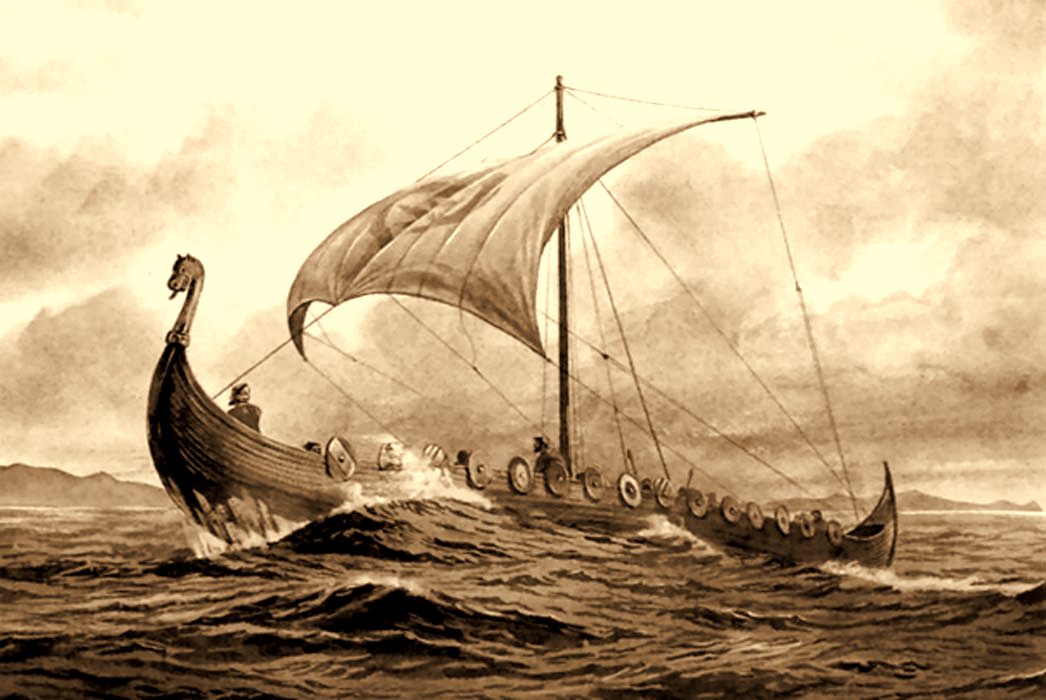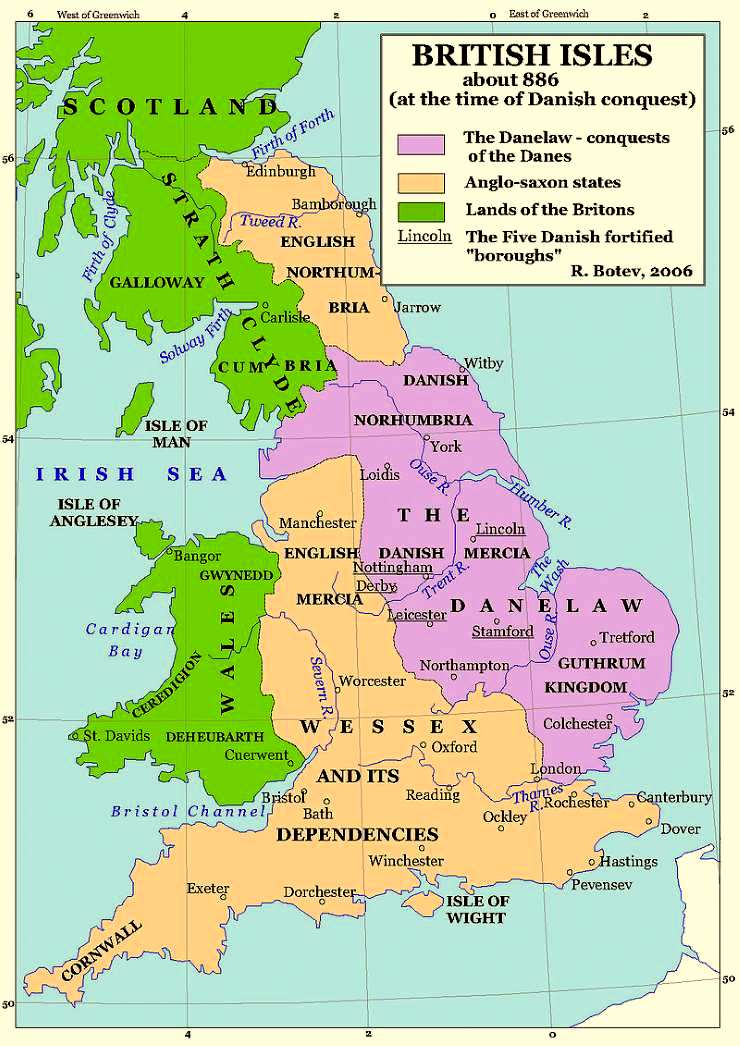793
VIKING RAIDS.
Isolated Viking raids began on the North East coast of England. Lindisfarne, Holy Island, was plundered and other monasteries presented easy targets.

827
FIRST ANGLO-SAXON RULER OF ENGLAND.
Egbert (Ecgherht) was the first Monarch to establish a stable and extensive rule over all of Anglo-Saxon England. After returning from exile at the court of Charlemagne in 802, he regained his kingdom of Wessex.
Following his conquest of Mercia in 827, he controlled all of England south of the Humber. After further victories in Northumberland and North Wales, he is recognised by the title Bretwalda (Anglo-Saxon, “ruler of the British”. A year before he died aged almost 70, he defeated a combined force of Danes and Cornish at Hingston Down in Cornwall.
850
The Danes and Norwegians had probably been trading with Britain for a long time as they had much in common with the Angles. Now their boats came for conquest and settlement.
865
DANISH GREAT ARMY – under Ivar the Boneless invaded East Anglia. After spending the winter there, it invaded Northumbria.
York was captured and much of the land south of the Tees.
867
The Northumbrian King Aelle was murdered by Danes. Some villages, like Skelton, retained their Anglo Saxon names, but the high incidence of Viking place names [ending in -by and -thorp] and the many words we still use of Danish origin indicate a great Norse influence in this area. For the next 200 years North and East England was under Viking control.
871
ASHDOWN – Alfred the Great of Wessex halted the Danish conquest and defeated them at Ashdown.
875
YORKSHIRE CONQUERED – Ivar the Boneless died and was succeeded by his brother Halfdene, who defeated the Mercians and became king of Yorkshire, which was divided into the three ridings and ruled from York.

937
The King of Wessex, Athelstan, who achieved a decisive victory at Brunanburgh, when a coalition of Irish, Norse, Scots and Northumbrians were defeated.
954
Wessex under Eadred defeated Eric Bloodaxe who was driven out of York and killed at Stainmoor.
959
Edgar who came to the throne of Wessex and spent the next 17 years of his reign trying to weld the states of Northumbria, Mercia, East Anglia and Wessex into a single body.
991
DANEGELD – England was threatened by attack from Olaf, King of Norway and Svein, King of Denmark. Aethelred II of Wessex paid the first Danegeld – protection money to buy them off.
1013
DANISH KING OF ALL ENGLAND – King Svein of Denmark invaded and became King of Northumbria. Aethelred of Wessex fled to Normandy and Svein was made King of England.
1016
CANUTE – The Danes rule England under King Canute.
70 years after this time the Domesday book tells us that Skelton used to be under the Lordship of Uctred who “had there one manor”.
Uctred was also the Lord of other nearby villages – Brotton, Marske, Tocketts, Westlidun, Kilton, Barnaby, Kilton Thorpe, Stainton, Roxby, Normanby and Aislaby. Villagers were composed of slaves who had no freedom at all and the half-free. These latter were people who the Domesday book calls “villanes”, workers who were not paid and paid no rent, but were obliged to work their own land and the land of the lord as well – his “demesne”. Uctred held the land from a higher lord or Earl and had obligations to fight on his behalf and provide a certain number of armed men. For purposes of administration, justice and gathering armies the Danelaw was divided into “Wapentakes” – literally the mustering of weapons. Skelton was part of the ‘Wapentake’ of Langbaurgh
1033
King Canute, who was also king of Denmark and Norway was more concerned with events in those parts. England was placed under the governance of 3 Earls, Northumbria under Earl Siward.
1042
EDWARD THE CONFESSOR – After the early deaths of Canute’s two sons, Edward became King of England with Danish support.
Next Page – 1066 ~ 1119
Previous Page Skelton’s Rosetta Stone.
Contents Page